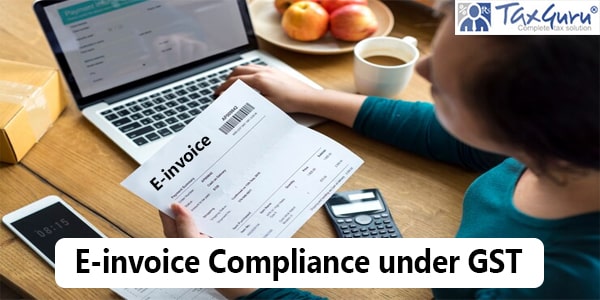Introduction: Discover the recent changes in e-invoice compliance under GST with the Central Board of Indirect Taxes reducing the turnover limit to Rs.5.00 Crore through Notification No. 10/2023–Central Tax. This article outlines the implementation details, process, and exemptions.
Page Contents
Turnover Threshold and applicability of E-invoice
The Central Board of Indirect Taxes (CBIC) announced Notification No. 10/2023–Central Tax dated May 10, 2023, to reduce the e-invoicing turnover limit to Rs.5.00 Crore, implemented w.e.f. August 1, 2023. The earlier E-invoicing turnover limits during the inception of E-invoicing rule was Rs.500 cr. which is reduced to its present turnover limit to 5.00 Crore. This means that e-Invoice generation will be Mandatory for every taxpayer with an annual aggregate turnover exceeding Rs.5.00 Crore in any year from 2017-18 onwards to generate e-invoices for B2B supplies w.e.f. August 1, 2023.
Process of generation of E-invoice
Registered persons under GST for B2B supplies and some specified supplies falling under above turnover threshold criteria create their GST invoices on their own Accounting/Billing/ERP Systems. These invoices will be reported to ‘Invoice Registration Portal (IRP). On reporting, The IRP will generate a QR code containing the unique IRN (hash) along with some important particulars of invoice including digital signature so that it can be verified by an Offline App. Then, the invoice can be issued to the receiver (along with QR Code). The Signed QR Code can be verified by anyone using the offline app provided on the IRP portal. Content of the signed QR code can be easily verified by the tax payers or Tax Officials to ascertain whether the invoice is registered with the IRP and is digitally signed by the IRP itself. By validating the content of the QR code data with the digitally signed content (which is part of the QR code itself) one can check the authenticity of the document contents. If the content of the QR code is tampered with, the signature verification fails and the e-Invoice will become invalid. It is important to note that The IRN, once generated cannot be modified or deleted. However, if IRN is generated with wrong information, it can be cancelled. Once cancelled, the same document (with same document number) can’t be reported again for generation of IRN. The cancellation is required to be done within 24 hours from the time of generation. If there is a mistake, incorrect or wrong entry in the e-invoice, then it cannot be edited or corrected. Only option is to cancel that invoice/IRN and report a new document (with new number) and generate a fresh IRN.

How to check Status of Tax payer-E-invoice
There is an option in the https://einvoice1.gst.gov.in portal under search menu as ‘Status of Tax Payer’. Select and enter the GSTIN and see the enablement status for the entered tax payer. There is an option in the https://einvoice1.gst.gov.in portal under registration menu as ‘e-Invoice Enablement’. Select and enter the any GSTIN of the company and get the OTP authenticated and enter the turnover with related financial year and submit. You are enabled for the e-invoicing and login and register.
Non applicability of E-invoice under GST
Entities/sectors for which e-Invoicing is not applicable/ exempt:
| Sr.
No. |
Category of Entities |
| 1. | Special Economic Zone Units |
| 2. | Insurers |
| 3. | Banking companies or financial institutions including a Non-Banking Financial Company (NBFC) |
| 4. | Goods Transport Agency (GTA) supplying services in relation to transportation of goods by road in a goods carriage |
| 5. | Suppliers of passenger transportation service |
| 6. | Suppliers of services by way of admission to exhibition of cinematograph films in multiplex screens |
| 7. | Persons registered in terms of rule 14 of CGST Rules (OIDAR) |
| 8. | Local authority |
| 9. | Government department |
Conclusion: Stay informed about the changes in e-invoice compliance under GST, including the revised turnover limit and the detailed process of e-invoice generation. This comprehensive guide covers implementation details, verification methods, and entities exempt from e-invoicing requirements.




